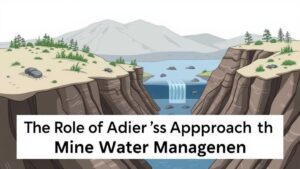The Significance of Heavy Sands in Gold Concentration
The Significance of Heavy Sands in Gold Concentration
Heavy sands, often rich in minerals and metals, play a crucial role in the concentration and extraction of gold. These sands are composed of denser mineral particles, including ilmenite, zircon, and monazite, which facilitate the separation of gold from other materials in mining operations. This article explores the significance of heavy sands in gold concentration, detailing their properties, methods of extraction, and real-world applications.
Understanding Heavy Sands
Heavy sands are typically found in riverine, coastal, and delta environments, where natural processes concentrate mineral particles in sediments. r high specific gravity–often exceeding 2.5 g/cm³–means that they settle faster than lighter minerals during sedimentation. Key components of heavy sands include:
- Ilmenite: A primary source of titanium, ilmenite is often found alongside gold in heavy sands.
- Zircon: This mineral is valued for its high resistance to weathering and its economic importance in the ceramics industry.
- Monazite: A rare earth phosphate mineral that contains thorium, which is important for nuclear applications.
The concentration of these heavy minerals is facilitated by their resistance to erosion, which allows them to persist in geological environments over significant periods.
Methods of Gold Concentration from Heavy Sands
The extraction of gold from heavy sands utilizes various techniques, including gravity separation, magnetic separation, and flotation methods. These processes are essential for maximizing gold recovery and minimizing environmental impact.
- Gravity Separation: This method exploits the density differences between gold and lighter minerals. Equipment such as sluice boxes and shaking tables are commonly employed, allowing gold to settle at the bottom while lighter minerals are washed away.
- Magnetic Separation: In cases where heavy sands contain magnetic minerals like ilmenite, magnetic separation techniques can be used to remove these components, enriching the remaining material with gold.
- Flotation: This advanced technique involves adding chemicals to the slurry that make gold and other minerals hydrophobic. Air bubbles are introduced, and the gold attaches to the bubbles, rising to the surface for collection.
Case Studies and Real-World Applications
In southern Africa, heavy mineral sand deposits have become vital sources for gold and other valuable metals. For example, the Richards Bay Minerals project in South Africa utilizes techniques of offshore and inland mining to extract heavy minerals, significantly contributing to the local economy.
Similarly, in Western Australia, the extraction of heavy sands has led to innovative technologies that improve gold concentration processes and yield higher recovery rates. Studies have shown that operations employing these techniques can achieve gold recovery rates exceeding 90% from heavy sands, demonstrating the efficiency of modern mining practices.
Environmental Considerations
The significance of heavy sands in gold concentration is not without environmental impact. Mining activities can lead to land degradation, disruption of water systems, and loss of biodiversity. So, it is essential for mining companies to adhere to sustainable practices:
- Useing reclamation strategies to restore mined areas.
- Using water-efficient processes to minimize resource consumption.
- Engaging in biodiversity assessments prior to establishing mining operations.
Conclusion
The role of heavy sands in gold concentration cannot be overstated. r unique properties enable efficient separation and extraction of gold, contributing significantly to the global supply. But, as mining continues to evolve, it is imperative to balance economic benefits with environmental stewardship. By adopting responsible mining practices and leveraging advanced technologies, the industry can minimize its ecological footprint while ensuring the long-term viability of gold extraction from heavy sands. For those engaged in or considering heavy sands mining, understanding these dynamics is key to operational success and sustainability.

